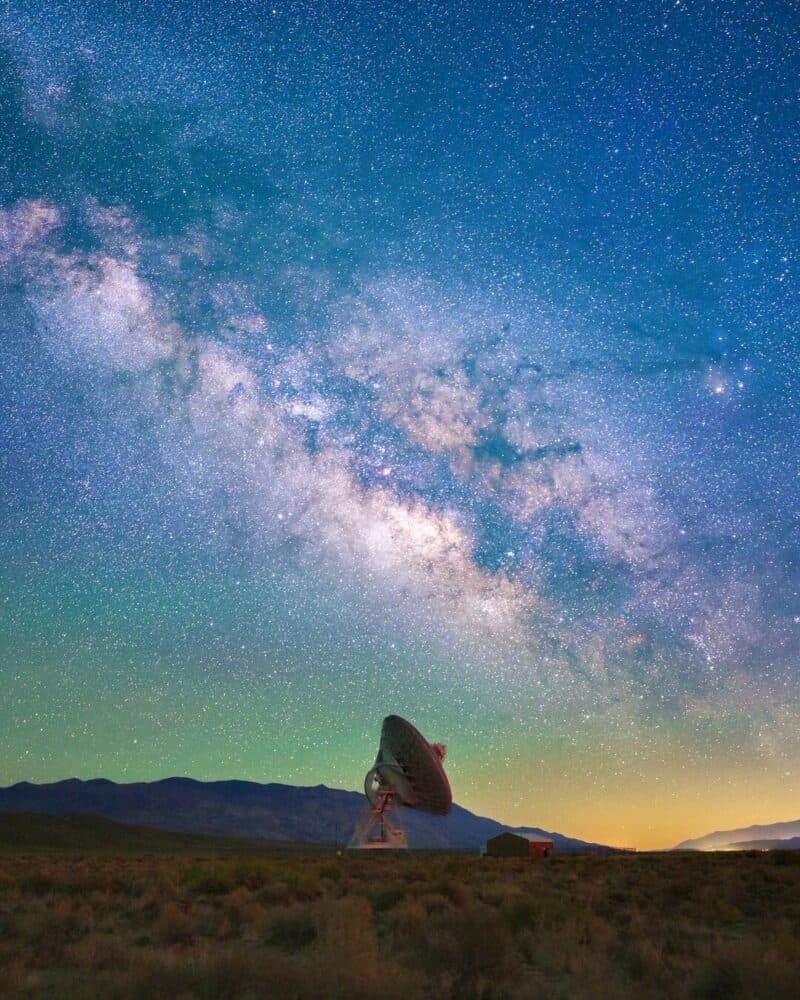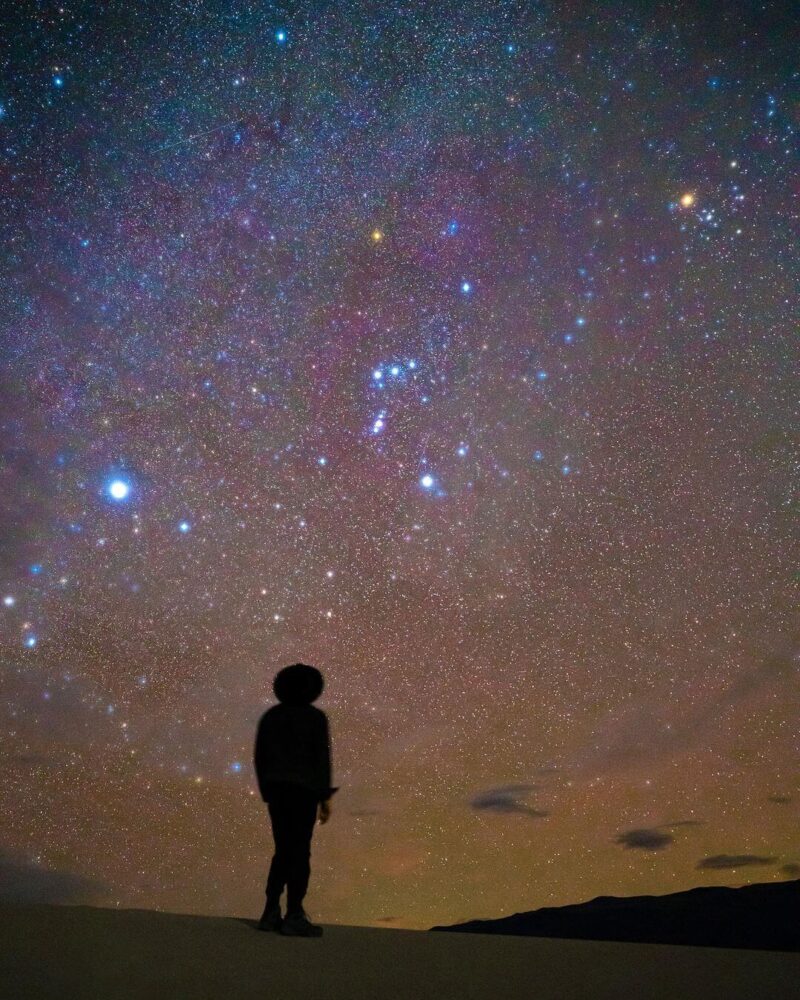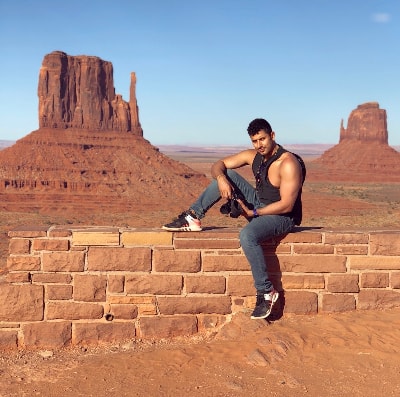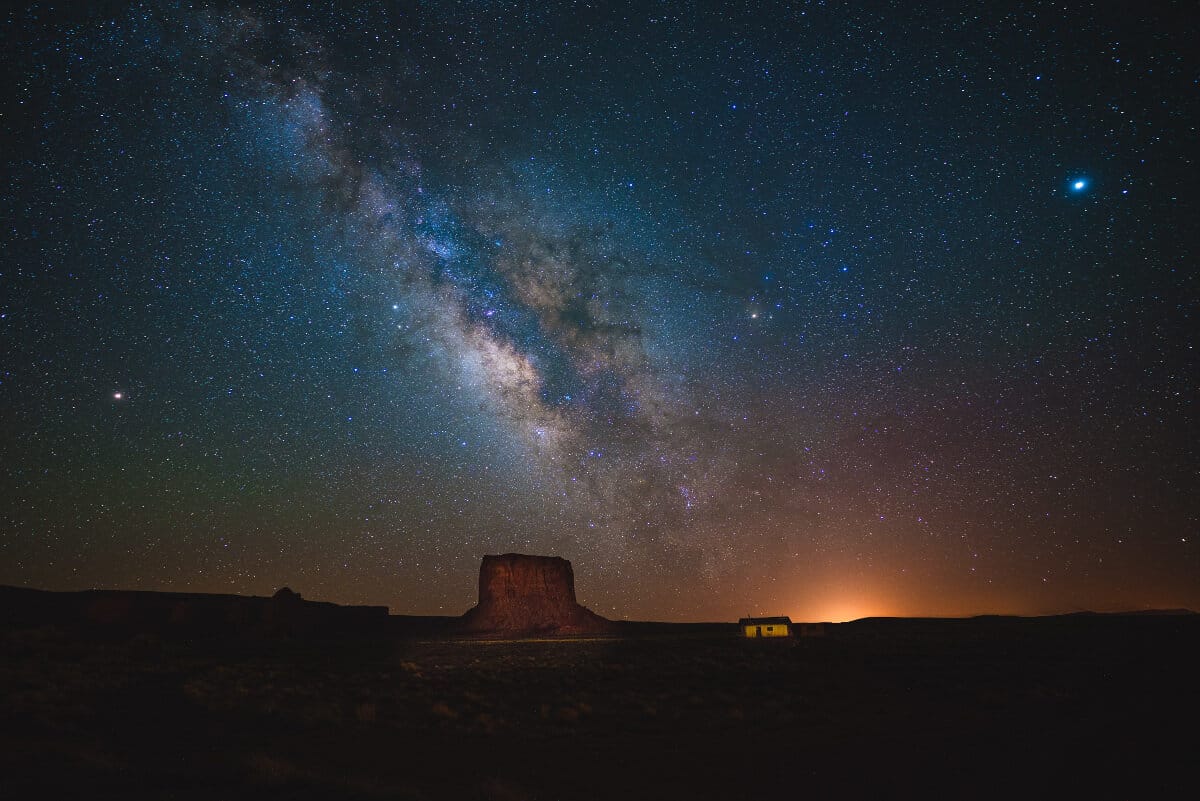Here we ask Abdul Dremali to examine how he took the above image from Monument Valley, which is on the Arizona-Utah state border in the US.
This stunning picture includes Mars, Saturn, Jupiter, the Milky Way, and far-off nebula.
How Did You Plan the Shot?
Monument Valley has been a bucket-list item for me for a long time. In fact, the American Southwest as a whole is so intriguing to me as a foreigner.
I moved here from Egypt as a young boy and have been fortunate enough to travel to many states, but this entire region was left undiscovered until this road trip.
A close friend of mine (Hi Anthony!) and I decided to fly from Boston to Denver, rent a car and drive to Los Angeles.
The planning phase took several weeks and we had to make a tough call, drive north through the mountains and the ever-photogenic Zion National Park… or go south through the Rio Grande National Forest and the desert regions of Arizona, New Mexico and Utah. We chose the latter, something not many people would do.
We planned the trip for May 10th, this meant that we were in close proximity to the New Moon, which is essential for a truly dark sky. People don’t realize just how much light pollution the moon gives off and if we were planning on exploring some of the darkest skies in the country, we wanted to make it count.
April through October is what astrophotographers call ‘Milky Way Season’, the galactic core is prominent in the sky and this season in particular we’re lucky to have several planets showing off as well.
On day 3 of our trip we arrived at Monument Valley, my favorite location on the itinerary. We spent the day doing our normal landscape photography and got some lifetime keepers, but the night sky is what excited me the most.
We woke up around 1:30 AM and quickly realized we forgot to scout locations. Being on Navajo land means lots of places are sacred and closed off to tourists, we were sure to be respectful of their privacy and drove along the main highway to find a monument to photograph.
I use the app called Sky Guide to find the milky way and any planets or other interesting features, then begin my process.
In this photo, you can prominently see Mars to the left, Saturn in the center, and Jupiter on the right. The galactic center is vibrant and you can make out various nebulae such as the Lagoon Nebula and the Trifid Nebula.
What Equipment Did You Use?
I shoot with a Sony A7Riii and a Zeiss Batis 18mm.
The lens was provided to me by a generous sponsor, the Al Sadeem Observatory in Abu Dhabi.
My tripod is a 3 Legged Thing Leo, which is a carbon fiber travel tripod I recently purchased.
Sometimes I use a cheap intervalometer to help me with my continuous shots but I did this photo manually because I forgot it at the B&B. I take about 20 of each photo to stack them later on.

How Did You Compose the Shot?
My settings are usually f/2.8, ISO 6400, and 20 seconds. Since I stack I can actually bump the ISO higher and lower my shutter speed but I just like the results I get from this better.
The composition was actually pretty simple because I only had one angle on the monument.
I had to stop outside a fence so I wouldn’t be trespassing and the Milky Way was so easily recognizable that composing it was a no-brainer.
I took 14 shots and left pretty quickly, it was windy and kind of cold.
What Post-Processing Did You Do?
I import my photos into Lightroom, turn off all noise reduction and do some very basic edits on these photos before loading them into my stacking software.
I use an application called Starry Landscape Stacker which helps me take all of the photos, layer them on top of each other, mask out the foreground and apply a median filter for noise reduction.
Stacking this many photos means there is virtually no noise and I can extract a lot of detail from the sky. For example, the nebulae in the heart of the galactic center are pretty easily visible and this is with an ultra wide-angle lens.
Once the stacking is done, I load them back into Lightroom and fix any hot pixels from exposing for so long, apply my normal edits and I’m all done.

Can You Recommend Any Learning Resources For Other Astrophotographers?
Hands down the best place to learn Astrophotography is Lonely Speck.
I have no affiliation with them but Ian, the guy in the videos is such a great resource.
I’ve never spoken to the guy but I almost want to write him a “thank you” email for the help he’s provided me.
The key is to go out and try for yourself though. No amount of tutorials or videos is ever going to actually make you better.

About You – Abdul Dremali
I live in Boston, which is far from any truly dark skies. I’m a Marketing Director and Consultant by day but am very passionate about photography as a hobby.
I got into photography because of my love of the night sky but have since expanded into regular landscape photography in general. I would like to go semi-pro as a landscape photographer but I’m too passionate about my day job to give it up. I sell a decent amount of prints and have done sponsored work and would love to continue both, if anyone wants to sponsor another astro trip, let me know!!
My Instagram is @advil but I’m most active on Twitter.
I sell prints to support my work here. I actually don’t buy cameras or gear unless it’s directly from selling prints or a sponsor, so I’d love your support!
If you’d like to contact me, I have a form on my website.
(This interview was first published on July 22, 2018)



